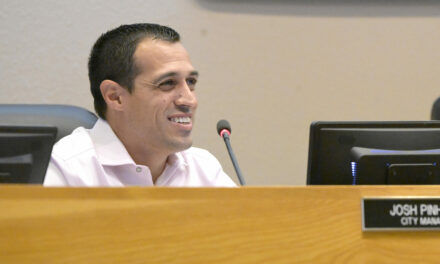Sept. 17 is possibly the most important day on our national calendar. The date commemorates the signing of the United States Constitution in 1787. Without this critical document, freedom as we know it would not exist.
Unlike many other important dates, Constitution Day passes without school closures. Government-funded educational institutions are mandated to provide Constitution-based educational programming on this day or at some point during the week.
History, reading, other language arts, math and art all have potential for constitutional studies. Teachers can find numerous ideas by searching the Internet.
The United States Constitution has many important elements for study. For this federal election year, the provision of the Electoral College is well worth exploring.
The Electoral College, provided for in Article II, is possibly the least understood element in the United States Constitution. In reality, a body of people representing each state elects the president and vice president of the United States.
To begin with, the United States is a democratic republic, not a simple democracy. For constitution designers, the concept of building the new country as a simple democracy was not even a consideration.
Imagine the chaos if every person had a vote on every necessary issue. The concept of counting the votes of millions of people is mind-boggling.
Our government’s founders knew the horrors. Many individuals would not make informed decisions. Vote buying would be too tempting, and ballot manipulation would be a constant threat.
The drawbacks of “one vote for one person” are no less today than in 1787. Not only is a simple democracy on a national scale impossible, but the government unites states. That is why we are united “states,” not united “individuals.”
Each colony in the 18th century had its own way of life with different regulations and systems. The leaders in each colony had grave concerns about losing their identities, powers and rights.
The obvious conclusion was that the new country would be a republic, a union of relatively independent states. The federal government’s powers were to be limited only to those items necessary for keeping the country intact.
The devised system attempted to prevent larger states from overpowering small states. Accordingly, two houses of Congress were designed to provide a balanced government.
The Senate represents the states. Each state sends two senators to Congress.
The House of Representatives is based on the population of each state, which is determined by the current census count. This provides a fair number of representatives per number of people.
When the founders had to define how a president was elected, they decided a system based on Congress was the fairest way. The electors from each state determine the total of its senators and representatives. Accordingly, the Electoral College is formed.
There are 535 electors from the states and three from Washington, D.C. The total is 538 electors.
A simple majority of 270 electors is required to elect a president. Students might consult the Internet to fill in a map with the number of electoral votes for each state.
Each state is entitled to create its own method for choosing electors. Generally, when citizens vote on election day, they actually are voting for a slate of electors who vowed to vote for a particular candidate.
Today, the Electoral College is often misunderstood. Nevertheless, the designers of the United States Constitution put in a great deal of effort to develop a just federal election system. Their insights should not be taken lightly.
Think federally. Vote locally.
Janet Miller’s e-book, Family Prayers and Activities: Weekly Guides, is for families or prayer groups. Janet is the creator of Friends on the Way, an e-resource for churches to teach families about the Bible and discipleship. Find it at www.TeamRCIA.com.


